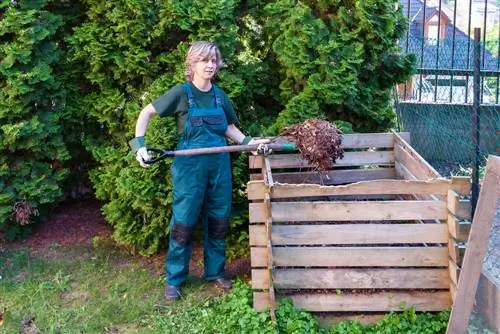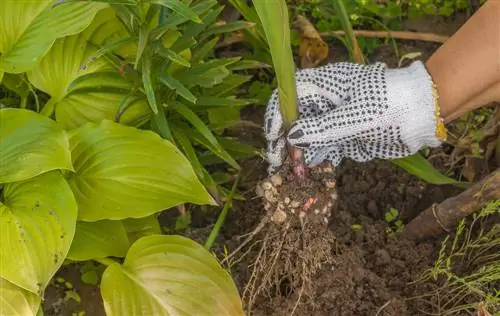- Author admin [email protected].
- Public 2023-12-16 16:46.
- Last modified 2025-01-23 11:20.
Reeds can become a real pest: The roots spread very widely and drive out other plants. Digging up is one way to permanently get rid of the reeds. Below you will find out how best to proceed and what needs to be taken into account.

How can I successfully dig up reeds?
To dig up reeds, you will need sturdy gardening gloves, sharp secateurs, a pickaxe and a spade. Cut the reeds, loosen the roots and dig deep and wide to remove all root parts.
Why is it so difficult to dig up reeds
Reed refers to two different types of plants whose root growth is quite similar: reed and miscanthus. Both species grow very vigorously, even if there are a few new varieties that do not form long runners. However, real reed and conventional miscanthus form extremely long roots and spread both in width and depth. The roots of reed can reach up to 1.5 meters deep into the ground, while the roots of Miscanthus can reach even up to 2.5 meters. This makes removal extremely complicated.
How deep do I have to dig to dig up reeds?
In general, you can assume that the larger the reed is, the longer the roots are. So if your reeds are several meters high, you can be prepared to have to dig up to one or even two meters deep. If the reeds are still relatively low, you may be lucky and only have to dig half a meter deep.
What tools do you need to dig up reeds?
Since reeds have very sharp edges, you should definitely wear sturdy gardening gloves (€17.00 at Amazon) when removing the reeds. You will also need sharp secateurs, a pickaxe and a good spade with a shovel that is as pointed as possible.
How to dig up
- First cut the leaves and fronds down to the ground.
- Then loosely chop the exposed roots with the pickaxe and remove them.
- Then alternate spade and pickaxe and chop and dig both in depth and width until you have removed all root residue.
- Make sure you remove all parts of the plant so that the reeds don't come back.
Prevention is better than digging out
Excavation is laborious and time-consuming. It is therefore advisable to limit root growth when planting. When planting, place a root barrier around your reeds or miscanthus to prevent the ornamental grass from spreading randomly.






